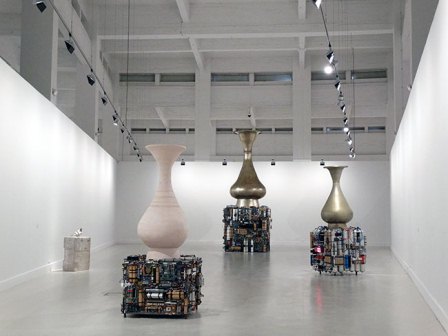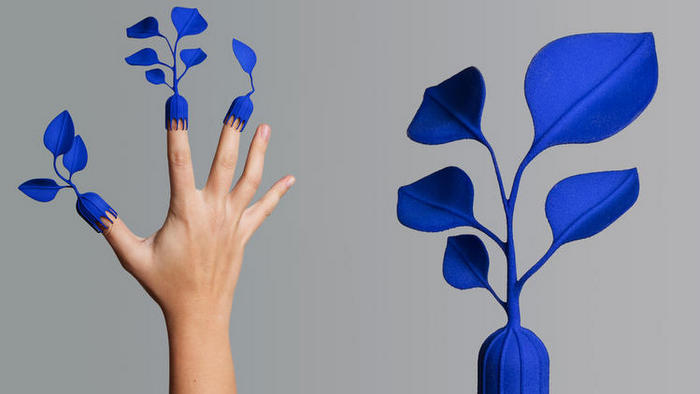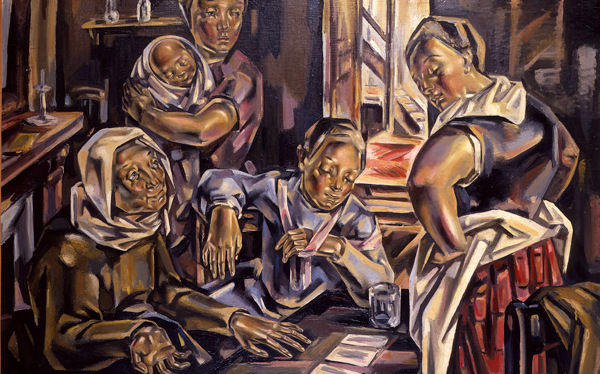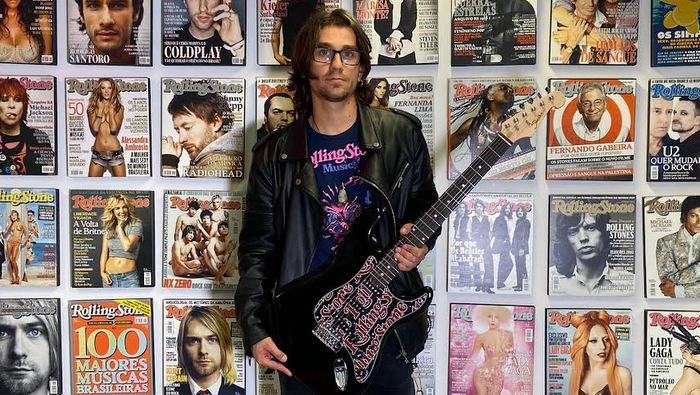 The Centro de Arte Contemporáneo de Málaga is pleased to host Adel Abdessemed’s first solo exhibition at a Spanish museum. In the show curated by Fernando Francés, which the Algerian-born French artist has entitled Palace, three large-format sculptures, Le Vase abominable, and a small one featuring a stuffed pigeon will occupy the museum’s central gallery. Themes like violence, politics and religion are openly explored in the oeuvre of this international and multidisciplinary creator using a wide variety of materials. Abdessemed’s work delves into history and, through his intervention, draws it into the present, underscoring its relevance for today’s world. Palace is a brand-new presentation that exposes the contrasts between different cultures while also portraying our individual fears and phobias. The artist immigrated to France in the 1990s, fleeing from the religious and political turmoil that had ravaged his homeland and put an end to much of Algeria’s intellectual and cultural life. After residing in Paris, New York and Berlin, he currently lives and works in London.
The Centro de Arte Contemporáneo de Málaga is pleased to host Adel Abdessemed’s first solo exhibition at a Spanish museum. In the show curated by Fernando Francés, which the Algerian-born French artist has entitled Palace, three large-format sculptures, Le Vase abominable, and a small one featuring a stuffed pigeon will occupy the museum’s central gallery. Themes like violence, politics and religion are openly explored in the oeuvre of this international and multidisciplinary creator using a wide variety of materials. Abdessemed’s work delves into history and, through his intervention, draws it into the present, underscoring its relevance for today’s world. Palace is a brand-new presentation that exposes the contrasts between different cultures while also portraying our individual fears and phobias. The artist immigrated to France in the 1990s, fleeing from the religious and political turmoil that had ravaged his homeland and put an end to much of Algeria’s intellectual and cultural life. After residing in Paris, New York and Berlin, he currently lives and works in London.
“Birth is violent. Death is violent. Violence is everywhere, except in my soul.” This idea has been voiced by Adel Abdessemed (Constantine, Algeria, 1971) on more than one occasion when discussing his work. Palace is the title of this exhibition consisting of three sculpture pieces and a stuffed and mounted animal. The artist resorts to violence as an expressive tool for exploring themes such as religion and politics through art. Adel Abdessemed sees the potential beauty of violence as an effective means of expression and source of energy. He is a multidisciplinary artist who works with sculpture, installation, photography, video, and drawing.
For Fernando Francés, director of the CAC Málaga, “The idea is to break through and progress from stage to stage until ecstasy is attained. Abdessemed has noted that in each of his works the principal driving force is, in fact, ecstasy, freeing the mind to the point that it reaches a plane far above the rest of the body. The concept is similar to that of the mystic Sufi Hadra dances, in which deep breathing and rhythmic movements become a choreography where the soul severs all of its material ties. This soul-stirring aspect of his acts is later translated into actions where duality is omnipresent: good and evil, man and woman, yin and yang, and a whole slew of similar concepts that can never appear individually, for they must always be accompanied by their opposite. In the work presented at the CAC Málaga, the three sculpture pieces illustrate that duality. The vessel is represented as a container of desires, frustrations, longings, emotions and countless other things, resting on a structure that is its opposite: a weapon, a bomb, programmed to destroy and lay waste to everything around it.
The sculpture Pigeon (2015) is a stuffed (city pigeon) bearing what seem to be explosives on its back. Here, once again, the artist has used antithetical concepts—the pigeon or dove as a symbol of peace and the dynamite as a tool of destruction—to offer an ironic commentary on the conflicts that plague our globalised world. In doing so, he materialises individual fears and concerns; as Abdessemed himself once remarked, “all artworks are autobiographical”.
In the 1990s, the artist was forced to leave his country after a wave of violence which claimed the lives of leading Algerian intellectuals, artists and writers, several of whom were Abdessemed’s personal friends. Ever since, he has denounced such conflicts in his own way, drawing attention to humanity’s incredible capacity for cruelty. Humor is also present in his work, where he always strives to do something different and make his audience doubt what they see in the gallery. Materials are a vital part of his art, and he uses all kinds of resources to create a direct visual language that is at once sensitive and controversial.
Adel Abdessemed was born in Constantine, Algeria, in 1971 and moved to France in 1994. After spending a year in the International Studio Program at the P.S.1 Contemporary Art Center in Long Island City, New York, he moved to Berlin. He currently lives and works in London. He studied at the École des Beaux-Arts d’Alger in Algeria and the École nationale des Beaux-Arts de Lyon in France. The Centre Georges Pompidou hosted one of his most important individual shows to date in October 2012. Other notable solo exhibitions have been held at the Parasol unit foundation for contemporary art, London (2010); the Ontario College of Art & Design, Toronto (2010); Fondazione Sandretto Re Rebaudengo, Turin (2009); MIT List Visual Arts Centre, Cambridge, Massachusetts (2008); Le Magasin – Centre National d’Art Contemporain, Grenoble (2008); and P.S.1 Contemporary Art Center, Long Island City, New York (2007).
The artist has also participated in numerous group exhibitions, including La disparition des lucioles, Collection Lambert, Avignon, France; Entre-temps, Moca Chengdu, China; Ravaged, Art and Culture in Times of Conflict, Museum Leuven, Belgium; Grandeur, Museum Beelden Aan Zee, The Hague, Netherlands; ArtLovers, Grimaldi Forum, Monaco (2014), Vues d’en haut/Views from above, Centre Pompidou-Metz, France (2013); Explosion! Painting as Action, Moderna Museet, Stockholm, Sweden; 7th Seoul International Media Art Biennale, Seoul Museum of Art, South Korea (all 2012); In Praise of Doubt, Punta della Dogana, Venice; Seeing is believing, KW Institute for Contemporary Art, Berlin, Germany (2011); the Thessaloniki Biennale in Greece (2010); 2010 Aichi Triennale, Nagoya, Japan (2010); Mapping the Studio: Artists from the François Pinault Collection, Palazzo Grassi and Punta della Dogana, Venice (2009); 10th Lyon Biennale (2009); 10th Istanbul Biennial (2009); 10th Havana Biennial (2009); 7th Gwangju Biennale, South Korea (2008); and 52nd Venice Biennale (2007).
His work is represented in important international collections, such as those of the Centre Georges Pompidou, Paris; the Israel Museum, Jerusalem; Mamco, Musée d’art moderne et contemporain, Geneva; Musée d’Art Moderne de la Ville de Paris; the Foundation François Pinault, Venice, and the Yuz foundation, Shanghai.
Related Publications

CID Grand Hornu: Super Power Design
April 25, 2024













